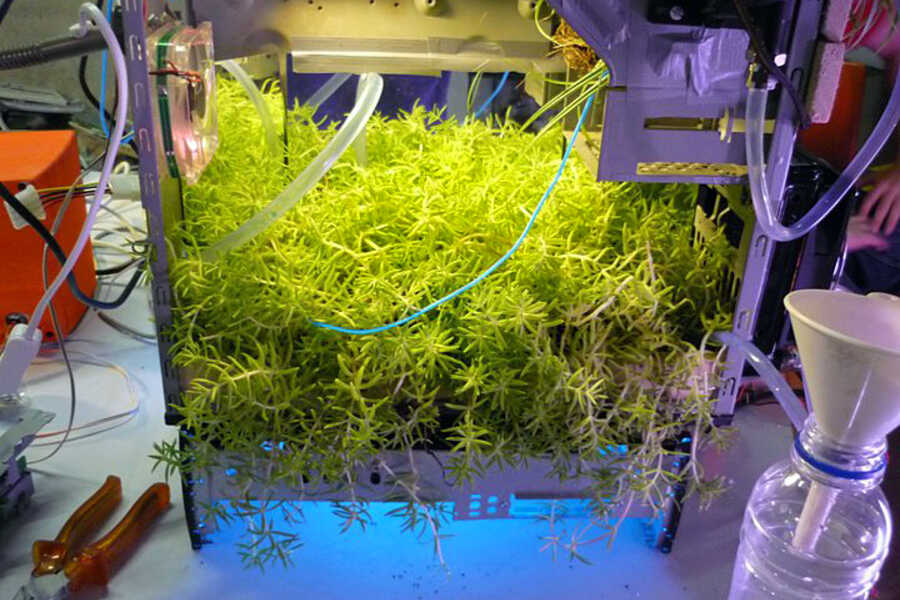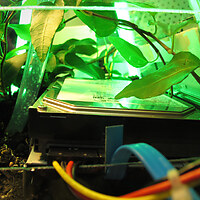Several team members acknowledged that their perception of computers gradually changed over the course of the workshop. Initially associating a computer with an 'untouchable black box', they came to view it as malleable technology. The same goes for open source operating systems such as Ubuntu. This suddenly became very accessible, and hence a valid alternative for Microsoft Windows or Mac OSX. The ease of connecting different computers into a local area network came as a surprise to some – especially the fact that no more is needed than a small switch box.
The plants were perceived by most participants as the most uncontrollable element. However, notice that none of them had any previous experience with growing plants. If horticulturalists would have been present in the team, we might have heard a different story. The general consensus was that plants simply cannot be dictated, only 'witnessed'. Seedlings generally grew really fast, but the other plants' growth rates seemed to somehow depend on the computer system they were part of. It is difficult to conclude that the actual computer electronics were responsible for this, since every system had its own type of lighting which might have overridden any other effect. Moreover, the connection between electronics and plants was not very clear in all systems. Sometimes plants were simply grown in containers on top of heated components (such as hard drives or power supply units). Most team members were surprised about the high survival rate of the plants, notwithstanding their quite 'unusual' environment. All plants needed to be taken care of manually since watering and nutrient supply were not automated. During the actual workshop more and more plants were gradually added, representing growth on a meta-level. This was mentioned by many team members as a very significant experience. Microscopic algae were an unknown world for most. The fact that the algae culture had been used before in the Philippines (2009) and in Ohio (2007-2008) was a source of fascination.
Apart from changes in computers and plants, there where also obvious changes on a social level. Throughout the workshop the group became much more coherent. The original smaller workgroups consisted of friends who enrolled together, but by the end had started to blend. People ‘grew’ during the workshop, and this was very apparent for a few individuals who started out low-key but gradually found a strong position in the group. Thomas was very quiet in the beginning but turned out to be a gifted Linux wizard. Dries took the role of a sideline spectator in the beginning, but became very active in the follow-up events (exhibition, game tournament). Team members mentioned that learning occurred both through working with computers, plants, and fellow team members. I personally noticed a high level of inventive troubleshooting. In one instance, a motherboard that everyone had given up on, was kick started again using a trashed fan and some duct tape. The pathways in Biomodd can be described using the following image: social meeting (computer use, gaming) gets translated into electronic waste heat which in turn boost biological growth. Hence, the amount of biological proliferation in Biomodd becomes a reflection of the social interaction that the art work generated, both through its creation and its display.




